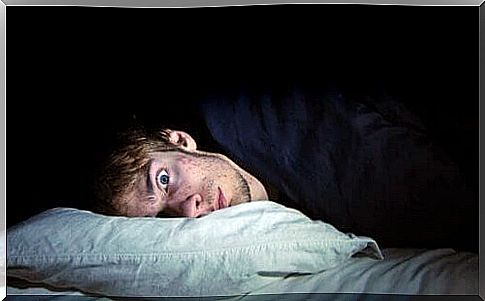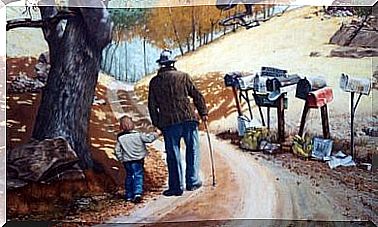Five Myths About Sleepwalking Debunked

Sleepwalking is a sleep disorder in which a person gets up at night and walks around while sleeping. The person can even talk. In fact, the person can act completely normally, as if awake.
Relatives are therefore often afraid that something will happen to him in this condition. For example, if the person goes outside, he could be hit by a car.
While we know a lot about this condition, there’s also a lot we think we know but we don’t. Some of these myths are for some reason assumed to be common knowledge, even if they are not true.
However, most sleepwalking myths stem from certain beliefs that we have never questioned or confirmed.
1. It’s dangerous to wake up a sleepwalker
A popular sleepwalking myth states that waking sleepwalkers is very dangerous. Some people say they could have a heart attack and die, while others say the sleepwalker could go crazy.
While none of the above statements are true, we should still be careful when waking a sleepwalker.
What happens if we wake up a sleepwalker? Sometimes we have such detailed dreams that they seem real and then when we wake up, we may be disoriented. Well, something similar happens to a person who is sleepwalking and wakes up in a different place from where he fell asleep.

A heart attack is a possibility if that person has heart problems, but that rarely happens. Something that does happen quite often is that the person is very confused, disoriented and maybe a bit grumpy or short-tempered.
To avoid a startle effect, which could possibly have dangerous consequences, it is therefore best to bring the sleepwalker back to his bed quietly.
2. They can’t get hurt in that condition
Another myth is that the sleepwalker cannot feel pain or get injured while sleepwalking. People often don’t worry if the sleepwalker trips or bumps into something while guiding them back to bed.
Sleepwalkers do not lose their senses, nor are they immune to stimuli. They can still get hurt. Therefore, it is important to be careful when returning to bed. In fact, if they hit something hard enough, they can even wake up.
3. Sleepwalkers always have their eyes closed
In horror movies, we often see sleepwalkers walking around with their eyes closed. In real life the situation is very different.
Sleepwalkers don’t always have their eyes closed. How else can they tell if the door is open or not, or going up and down stairs? Usually they just have their eyes open and can see where they are walking and what is happening around them, even though their brains are in deep sleep.
4. Sleepwalking Happens Every Night
This, too, is a sleepwalking myth that has permeated modern culture. People tend to think that sleepwalkers have a “seizure” every night.
In other words, that every time they go to sleep they need to be looked after because they are very likely to get out of bed. This is a misconception about this condition.
Sleepwalkers don’t get up in their sleep every night. Usually it happens when they are going through a stressful period in their lives. Stress is often the reason a sleepwalker has seizures for a given week, month, or a few days. It is therefore important to treat stress.

5. You have to lock them up
Family members sometimes become so concerned about the sleepwalker that they lock him up or physically confine him for safety reasons. However, this is not a good idea. A sleepwalker is more likely to injure himself if he is confined or confined to a small space.
It is best to close all doors and windows. Blinds are a good idea because if the person opens them, the sound will wake them up.
It’s important to be careful not to leave sharp objects or anything that could hurt himself in his reach. For example, objects such as knives or lighters should be kept in hard-to-reach places.
Some safety precautions are always necessary and these can be different for every sleepwalker. Some patients tend to go outside while others go to the kitchen to eat and maybe even cook something. Experts therefore recommend keeping all potentially dangerous objects out of their reach.

While there is still no specific treatment for sleepwalking, it is recommended to have good sleep habits. Here are some things that can help:
- Do not eat a heavy meal before going to bed.
- Go to bed at the same time every night.
- Get enough sleep.
- Manage your stress with therapy.









